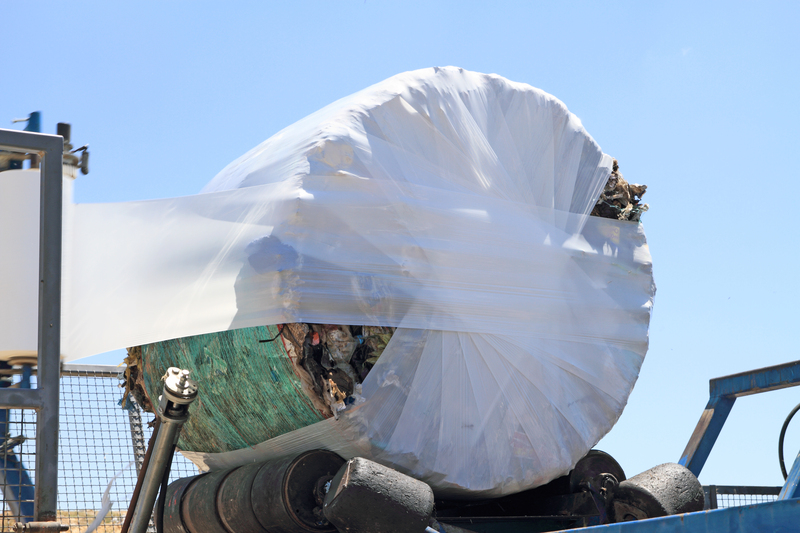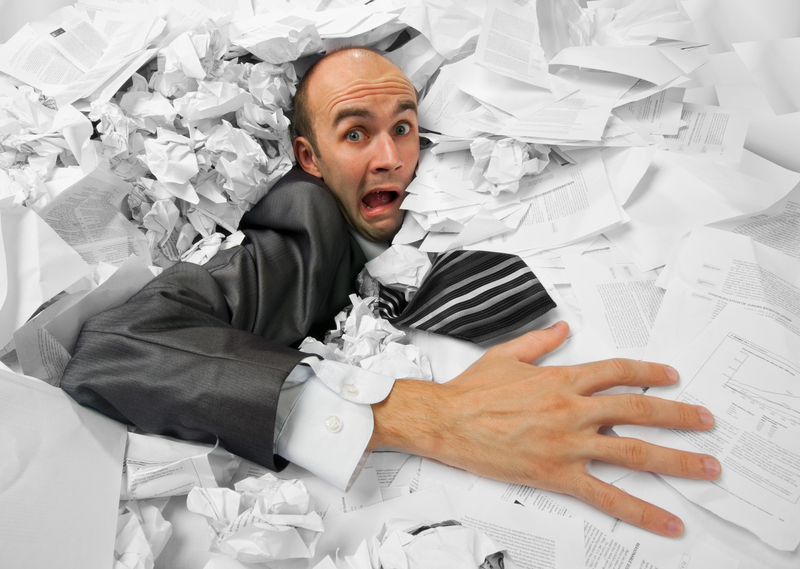Crafting Sustainable Work Environments: Office Waste Minimization
In today's fast-paced business world, sustainability is more than just a buzzword--it's a necessity. Organizations are under increasing pressure to reduce their carbon footprints and implement eco-friendly office practices. One of the most pivotal steps toward workplace sustainability is the effective minimization of office waste. Not only does this initiative benefit the environment, but it also brings about significant cost savings and boosts employee morale. In this comprehensive guide, we will explore strategies and actionable tips for crafting sustainable work environments through office waste minimization.
Table of Contents
- Why Minimize Office Waste?
- Understanding Types of Office Waste
- Core Strategies for Minimizing Office Waste
- Innovative Solutions for Sustainable Offices
- Engaging Employees in Waste Minimization
- Measuring and Sustaining Progress
- Future Trends in Sustainable Offices
- Conclusion
Why Is Office Waste Minimization Important?
Office waste minimization is central to the drive for sustainability in the workplace. Around the globe, offices generate millions of tons of waste annually, much of which ends up in landfills, contributing to environmental degradation. Addressing this challenge brings a host of benefits:
- Reduces Environmental Impact: Waste reduction cuts down on landfill use, lowers carbon emissions, and decreases resource consumption.
- Cost Efficiency: Less waste equals lower disposal costs and potential savings through recycling or reusing materials.
- Enhanced Company Image: Adopting sustainable office waste practices boosts brand reputation among stakeholders and customers.
- Regulatory Compliance: Offices may avoid fines and penalties by adhering to waste management regulations.
- Employee Engagement: Green initiatives foster a sense of pride and responsibility among staff members.
If you're aspiring to create a sustainable work environment, waste minimization in the workplace must become a top priority.
Understanding the Different Types of Office Waste
The journey toward responsible office waste management starts with recognizing what gets discarded in a typical workplace. Here's an overview of the most common waste categories:
1. Paper Waste
- Usage: Printing, photocopying, notepads, and packaging.
- Impact: Constitutes up to 50% of office waste. Paper comes from trees, so overuse leads to deforestation and energy-intensive production processes.
2. Electronic Waste (E-waste)
- Usage: Outdated computers, printers, mobile devices, and batteries.
- Impact: Contains hazardous substances; improper disposal contaminates soil and water.
3. Plastics
- Usage: Packaging, drink bottles, stationery, and food containers.
- Impact: Non-biodegradable; microplastics enter ecosystems and harm wildlife.
4. Food Waste
- Usage: Leftover lunches, coffee grounds, tea bags, and snacks.
- Impact: Decomposes to produce methane, a potent greenhouse gas.
5. Miscellaneous Waste
- Usage: Furniture, lighting, office supplies like pens and markers.
- Impact: Bulky items often end up in landfills, many of which could be recycled or refurbished.
Understanding these categories is fundamental to implementing targeted waste minimization strategies in the office.
Core Strategies for Crafting a Sustainable Waste-Minimized Office Workspace
How can you create an environment with minimal office waste? Here are proven strategies that work:
Adopt the 5Rs of Sustainable Office Waste Reduction
- Refuse: Say no to unnecessary materials. Stop accepting promotional items or excess packaging.
- Reduce: Minimize what you use--go digital, streamline procurement, and set print limits.
- Reuse: Encourage the use of refillable pens, rechargeable batteries, and reusable coffee cups.
- Repurpose: Find creative ways to give old office furniture or supplies a new lease on life.
- Recycle: Set up clear and accessible recycling stations for paper, plastics, metals, and e-waste.
Implement Paperless Practices
- Digitize Documents: Move records, invoices, and contracts online.
- Use Cloud Storage: Centralize files for easy access and sharing.
- Set "Print-Only-When-Necessary" Policies: Remind staff to print only what's essential.
Establish Comprehensive Recycling Programs
- Label Bins Clearly: Prevent contamination with clear instructions.
- Arrange Regular Pick-Ups: Partner with certified recycling companies for electronics and confidential paper shredding.
- Track Recycling Rates: Use data to measure and improve progress.
Encourage Sustainable Procurement
- Source Eco-Friendly Products: Choose office supplies with recycled content or green certifications.
- Minimize Packaging: Bulk orders can reduce individual wrappers and cardboard boxes.
Promote Green Office Culture
- Awareness Campaigns: Educate employees about the environmental impact of office waste and celebrate eco-achievements.
- Employee-Led Green Teams: Form committees to brainstorm and implement new ideas.
By following these key strategies, organizations can make significant progress towards creating sustainable workplaces through office waste reduction.
Innovative Solutions for Sustainable Office Waste Management
Modern workplaces are constantly evolving, and so must our approaches to sustainability and office waste minimization. Here are some cutting-edge ideas making waves in sustainable office design and management:
1. Smart Waste Bins
- Equipped with sensors indicating when they are full, helping cleaning teams optimize collection routes and reduce labor hours.
- Some models even sort recyclable materials automatically, reducing contamination.
2. Composting Programs
- Set up compost bins in kitchen areas to manage food scraps and coffee grounds.
- Partner with local gardens or farms to turn organic waste into nutrient-rich compost.
3. Digital Collaboration Tools
- Utilize virtual whiteboards, project management apps, and e-signature tools to replace paper-based collaboration.
4. Furniture Repurposing and Upcycling
- Work with artisans or local recyclers to transform old desks and chairs into new, functional office pieces.
- Encourage staff to participate in upcycling challenges for rewards or recognition.
5. Incentive-Based Waste Reduction Programs
- Launch competitions where teams track and reduce their waste, earning prizes or donations to green causes.
6. Zero-Waste Supply Purchases
- Source supplies from vendors who use zero-waste packaging or operate take-back schemes for used products.
Employing these innovative strategies brings office waste prevention efforts to the next level, aligning your workplace with modern expectations for sustainable business operations.
Engaging and Empowering Employees for Sustainable Change
Transitioning to a waste-minimized office is most successful when everyone is engaged. Here's how to create a culture of sustainability:
Education and Training
- Host regular workshops on proper recycling, composting, and responsible e-waste disposal.
- Introduce new hires to green policies as part of onboarding.
Open Communication
- Provide regular feedback on waste minimization progress through intranet updates or mail-outs.
- Solicit suggestions from employees for continuous improvement.
Lead by Example
- Management should actively participate in and promote sustainable practices in the workplace.
- Highlight "green champions" who excel at reducing waste.
Celebrate Milestones
- Publicly acknowledge teams or departments that achieve outstanding waste reduction results.
- Share success stories on company social channels and in the press.
Engaged, motivated staff are the driving force behind ongoing office waste minimization and the broader goal of crafting a sustainable work environment.
Tracking Progress and Sustaining Change
Ongoing improvement requires careful tracking and a willingness to adapt as needed. These steps ensure that sustainable practices become an enduring part of your company's culture:
- Audit Waste Streams: Conduct regular assessments to track the types and quantities of office waste. Use the data to identify problem areas and tailor interventions.
- Set SMART Goals: Choose Specific, Measurable, Achievable, Relevant, and Time-bound targets for waste reduction (e.g., cut paper use by 30% in one year).
- Monitor and Report: Share regular updates with all staff. Transparency builds trust and keeps everyone motivated.
- Review and Revise Policies: Stay informed about new technologies and changing office needs, updating waste minimization policies accordingly.
A dynamic, flexible approach to office waste management ensures that sustainability remains central even as your organization grows and changes.
The Future of Sustainable Office Environments
As businesses adapt to remote work, hybrid offices, and changing employee expectations, the field of sustainable office waste management continues to evolve. Here's what to watch for in the coming years:
- Circular Economy Adoption: Offices will increasingly participate in "take-back" and closed-loop systems, ensuring products are reused or recycled at the end of life.
- AI and Automation: Artificial intelligence will streamline waste sorting and boost recycling rates with smart bins and automated inventory management.
- Green Certifications: More organizations will pursue certifications such as LEED or BREEAM that recognize exemplary waste minimization and sustainability efforts.
- Remote Work Impact: With hybrid and remote work models, companies will rethink how to minimize office waste by supporting employees in greening their home offices as well.
By staying ahead of these trends, your organization can position itself as a leader in sustainable office practices, attracting top talent and new customers alike.
Conclusion: Charting a Sustainable Path Forward
Crafting a sustainable work environment through office waste minimization is both an environmental imperative and a smart business strategy. By understanding your waste streams, adopting a multi-faceted approach that includes the 5Rs, leveraging innovative solutions, and empowering employees, you lay the foundation for a greener, more efficient, and more collaborative workplace.
Commit to a journey of continuous improvement--measure, share, and celebrate your achievements along the way. As sustainability gains momentum, your efforts will reap dividends in cost savings, reputation enhancement, and a lasting positive impact on the planet. The time to act is now.
Lead the way. Craft a sustainable office. Minimize waste. Inspire change.

